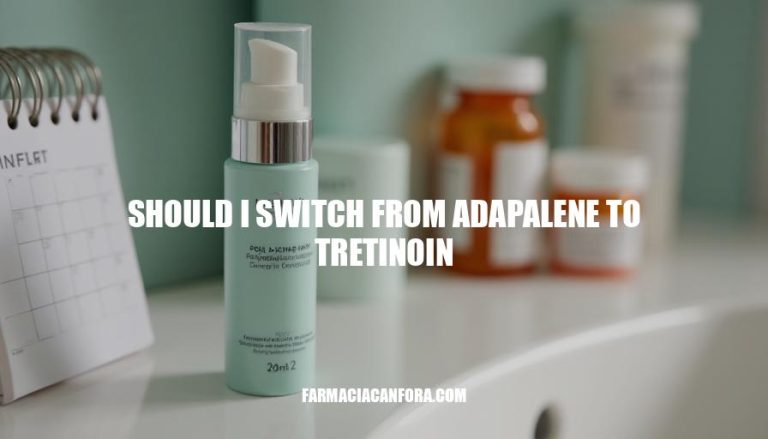


Adapalene and tretinoin are two popular topical retinoids used to treat acne and skin conditions. They’re both derived from vitamin A, but they work differently.
Adapalene is a third-generation retinoid that targets specific receptors in the skin. This makes it less irritating than other retinoids, making it a good choice for people with sensitive skin.
It helps to regulate skin cell turnover, prevent clogged pores, and reduce inflammation. You can even buy adapalene over-the-counter in lower concentrations.
Tretinoin, on the other hand, is a first-generation retinoid that binds to all receptors in the skin. This makes it more potent, but also more likely to cause irritation.
It’s available by prescription only and is often used for more severe acne or signs of aging like fine lines and hyperpigmentation.
The chemical properties of these retinoids are different too. Adapalene is stable and less prone to degradation, while tretinoin is more sensitive to light and air.
So, when should you switch from adapalene to tretinoin? If you’re looking for stronger anti-aging benefits or your acne isn’t responding to adapalene.
But be careful – tretinoin can cause irritation, so it’s essential to introduce it gradually and adjust your skincare routine accordingly.
When considering whether to switch from adapalene to tretinoin, several factors should be thoughtfully evaluated:
Skin Type: Tretinoin is generally more potent than adapalene, making it suitable for individuals with resilient skin. Those with sensitive skin may experience increased irritation and dryness, necessitating a cautious approach.
Current Skin Condition: Evaluate the specific concerns being addressed. Tretinoin is often preferred for more severe acne, signs of aging, or hyperpigmentation, while adapalene is effective for mild to moderate acne.
Potential Side Effects: Tretinoin can cause side effects such as redness, peeling, and increased sensitivity to sunlight.
These effects may be more pronounced compared to adapalene.
Consultation with a Dermatologist: A dermatologist can assess your skin’s tolerance and recommend the appropriate strength and formulation of tretinoin. They can also guide you on how to transition smoothly, minimizing potential irritation.
Skincare Routine Adjustments: Switching to tretinoin may require changes to your skincare routine, such as incorporating gentle cleansers, hydrating moisturizers, and diligent sun protection.
Gradual Transition: Starting with a lower concentration of tretinoin and gradually increasing usage frequency can help your skin adapt and reduce the risk of adverse reactions.
Lifestyle Considerations: Increased sun sensitivity with tretinoin use means that individuals with frequent outdoor exposure should prioritize sun protection.
Thoughtful evaluation of these factors, combined with professional guidance, ensures a safe and effective transition tailored to your skin’s needs.
1healthorskin.com2www.reddit.com3bing.com
Several factors should be thoughtfully evaluated when deciding whether to switch from adapalene to tretinoin.
Thoughtful evaluation of these factors, combined with professional guidance, ensures a safe and effective transition tailored to your skin’s needs.